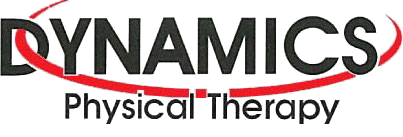The bones or vertebrae in the spine are very strong, but sometimes, in certain circumstances such as excessive pressure, repetitive bending or lifting or a physical injury such as a hard fall can damage or weaken vertebrae. When a spinal bone collapses, this is referred to as a compression fracture. For young, healthy individuals these fractures are rare but most likely to occur in those who work at heights or participate in sports like gymnastics, or aerial sports like ski jumping which involve high velocity repetitive bending, twisting and landing jumps from significant heights.
Another common cause of compression fractures is osteoporosis, which is a silent disease that gradually leads to weak or brittle bones. Bones that are thin and weak cannot withstand normal pressure and this may cause them to collapse during normal activity.
 The symptoms of a fracture will develop suddenly if it is caused by a forceful injury such as a fall or car accident, and it may involve severe pain that starts in the back and spreads to the arms or legs depending on where in the spine the fracture occurs. Numbness and weakness may also be experienced if the fracture compresses or damages nerves in the spine. In cases of slower vertebral collapse such as in the presence of osteoporosis, the pain may develop gradually or might not be felt at all until the vertebra breaks. In order to receive an accurate diagnosis for a compression fracture, a physician must complete a physical examination which will likely include diagnostic imaging such as x-rays that can help determine the location and severity of the fracture, and initial treatment approach. People with osteoporosis are more susceptible to compression fractures even from a minor trip or fall. Metastatic diseases such as cancer can also cause compression fractures as cancer may spread to the spine and destroy parts of the spinal bones.
The symptoms of a fracture will develop suddenly if it is caused by a forceful injury such as a fall or car accident, and it may involve severe pain that starts in the back and spreads to the arms or legs depending on where in the spine the fracture occurs. Numbness and weakness may also be experienced if the fracture compresses or damages nerves in the spine. In cases of slower vertebral collapse such as in the presence of osteoporosis, the pain may develop gradually or might not be felt at all until the vertebra breaks. In order to receive an accurate diagnosis for a compression fracture, a physician must complete a physical examination which will likely include diagnostic imaging such as x-rays that can help determine the location and severity of the fracture, and initial treatment approach. People with osteoporosis are more susceptible to compression fractures even from a minor trip or fall. Metastatic diseases such as cancer can also cause compression fractures as cancer may spread to the spine and destroy parts of the spinal bones.
The management approach for spinal compression fractures usually involves pain medication, initial resting, and in some cases, using a back brace to reduce spinal movement. The outcomes of this type of conventional approach vary widely with some people experiencing healing of the fracture in about 12 weeks through conventional treatment, while others need surgery. Physical therapy is a beneficial therapy to compliment medical management of compression fractures. Physical therapy will assist patients in maintaining range of motion and physical activity while protecting the healing area, whether the fracture is being managed conservatively or surgically.
A physical therapy program is typically designed after a thorough examination of the individual in order to assess physical ability, range of motion, and any possible impairment. Once the therapy begins, a physical therapist will demonstrate techniques that aim at reducing pain, improving posture, enhancing thoracic mobility, strengthening spinal muscles, improving trunk control, and strengthening the lower extremities that support the spine. This type of multimodal approach affords individuals who have experienced a compression fracture with significantly less pain as well as improved mobility and function in about 10 weeks.
If you’re suffering from persistent pain and discomfort due to a spinal compression fracture, a physical therapist can develop a recovery program that is specific to your needs. Working closely with a physical therapist at Dynamics Physical Therapy can prevent long-term disability and help restore your quality of life.
References
1. Ross MD, Elliott RL. Thoracic spine compression fracture in a patient with back pain. J Orthop Sports Phys Ther. 2008;38(4):214.
2. Lamanna A, Maingard J, et al. Vertebroplasty for acute painful osteoporotic vertebral compression fractures: An update. J Med Imaging Radiat Oncol. 2019, in press.
3. Baker LL1, Goodman SB, et al. Benign versus pathologic compression fractures of vertebral bodies: assessment with conventional spin-echo, chemical-shift, and STIR MR imaging. Radiology. 1990;174(2):495-502.
4. Theriault RL, Hortobagyi GN. Bone metastasis in breast cancer. Anticancer Drugs. 1992;3(5):455-62.
5. Weninger P, Schultz A, Hertz H. Conservative management of thoracolumbar and lumbar spine compression and burst fractures: functional and radiographic outcomes in 136 cases treated by closed reduction and casting. Arch Orthop Trauma Surg. 2009;129:207-19.
6. Rousing R, Hansen KL, et al. Twelve-months follow-up in forty-nine patients with acute/semiacute osteoporotic vertebral fractures treated conservatively or with percutaneous vertebroplasty. Spine. 2010;35(5):478-82.
7. Cahoj PA, Cook JL, Robinson BS. Efficacy of percutaneous vertebral augmentation and use of physical therapy intervention following vertebral compression fractures in older adults: a systematic review. J Geriatr Phys Ther. 2007;30(1):31-40.
8. Bennell KL, Matthews B, et al. Effects of an exercise and manual therapy program on physical impairments, function and quality of life in people with osteoporotic vertebral fracture: A randomised, single-blind controlled pilot trial. BMC Musculoskelet Disord. 2010;11(36):1-11.


